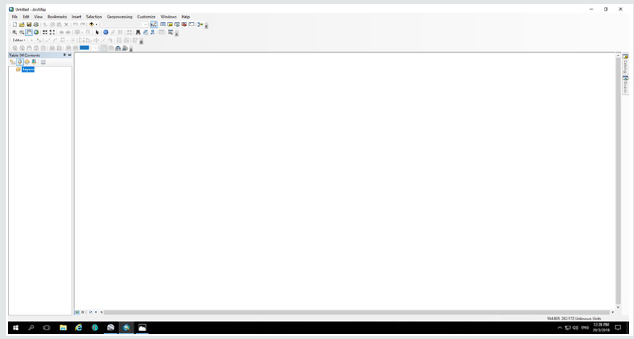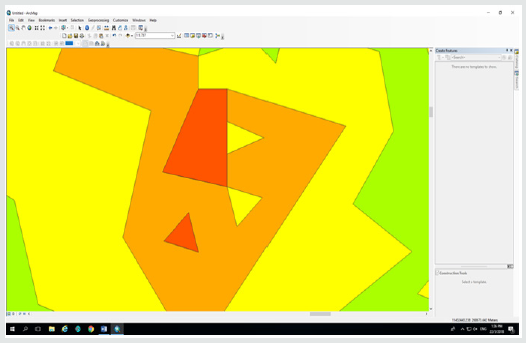
Lupine Publishers Group
Lupine Publishers
Menu
ISSN: 2637-4676
Mini Review(ISSN: 2637-4676) 
Herbicide Application in Precision Farming of Paddy based on Soil Organic Matter Volume 7 - Issue 1
Muhammad Hudzari Bin Haji Razali*, Muhamad Aqil Bin Rosman, Amar Shahrizat Bin Akim and Hallery Ali
- Faculty of Plantation and Agrotechnology, Malaysia
Received: June 11, 2019; Published: June 17, 2019
Corresponding author: Muhammad Hudzari Bin Haji Razali Faculty of Plantation and Agrotechnology UiTM, 77000 , Melaka Campus Jasin, Malaysia
DOI: 10.32474/CIACR.2019.07.000251
Abstract
Most producers use herbicides to manage weed infestation. Generally, the herbicides are used at a uniform rate to the entire field. However, a uniform application may not be appropriate for all areas of the field. This is because some of the factors are influencing the rate of herbicides. The soil properties like organic matter content are influence the rate of herbicides in lowland crop such as paddy. The site specific area that has rich in organic matter content are need the large amount of herbicide because soil with high organic matter need a higher herbicides application rates to ensure sufficient effectiveness. As precision agriculture technologies has been develop such as Global Positioning System (GPS) and Geographic Information System (GIS) which it can differentiated application of herbicides to minimizing herbicides cost, maximize weed control and prevent the environmental waste.
Introduction
Herbicide has been long in agriculture especially in controlling the population of weed that disturbing the growth of crops. When it comes to agriculture, grower would want to maximized profits and reduce lost. The use of herbicide can be quite costly as these chemical are not cheap. Therefore the usage of herbicide must maximized and reduce wastage. Wastage happened when the amount of herbicide application is more than needed or less. Too much herbicide can affect soil fertility and the pH level that can reduce crops productivity while insufficient applications might not be effective to control the weeds population. That why some grower has also adopt cultural control and manual weeding. Cultural control is suitable in preventing weed population to grow out of control and manual weeding would require a lot of labor especially if the crop field is in the sized of many hectares. Weeds are persistent and always find its way to produce more despite cultural control. That why herbicide application is needed H. Nordmeyer [1]. Furthermore, herbicide application also has its challenges. Each herbicide has its own unique chemical characteristic that influences its behavior. Interaction happened between herbicide chemistry and soil properties that can affect the efficiency of the herbicide applied. There has been a research that shows that the soil organic matter and pH can affect bioavailability, plant uptake and herbicide efficiency plus with the occurrence of uneven weeds that has relationship with soil properties. The availability of herbicide to weeds may not be as much as it is applied because a percentage of the herbicide may be absorbed by the clay and organic matters in soil. Depending on what type of soil applied herbicide, it might be more or less absorbed by the soil properties. Environmental factors such as temperature, soil moisture and many more can influence herbicide activity H. Nordmeyer [1].
Methodology
The ArcGIS Software is used (ArcMap application) After that, herbicide usages are usually according to the label recommendations, like uniform spraying over the field. But each field has natural variability in soil characteristic. Plus, the parameters of soil are known to very spatially. In precision farming, technologies offer the ability to apply the spraying of herbicide according to the field soil characteristic. But the availability of information about soil information can be limited to some extends. With the help of global positioning system (GPS) and soil sensors, the variability of soil can be mapped precisely. Plus, with the spatial variable of herbicide according to weed distribution, application of the herbicide can be according to various soil properties allows for minimization of herbicide and avoid damaging beneficial weeds. Of course, this is in accordance of the principles that included in integrated pest management Gupta [2]. The obstacle is delivering the right amount, right place, suitable time and type of herbicide to use. This can led to increase of profit maximization and ecological benefits plus with reduction of pollution and harm to the environment Aziz. et al. [3]. (Steps 1-4).
Step 4: The attribute table was opened and added the others information about the herbicides used, soil texture and soil organic matter.

Now days, the emergence of technology such as GIS has been an effective tool for mapping of natural resources. The resources can include the properties of soil in term of its content and types. This software will greatly beneficial for precision agriculture especially for herbicide application. Since the crops planted on low land are mostly rice, GIS can easily provide information about soil in lowlands. Rice crops are important and easily infected with weeds [4,5]. This is resulted from irrigation water and the nutrient that flows along with. With GIS, farmers can gain information and the right way to apply herbicide. Plus, each field location can be identifying, and this will make management become more accurate and precise Aziz et al. [3].
Conclusion
The precision agriculture can thus be implemented to improvise the already existing method to maximize the benefits of the small specific site locations. GIS and Remote Sensing is very important to monitor farm practices at this scale[6-8]. Uses of GPS can pinpoint specific site to solve their problems and get better solution from GIS information. Spatial content related to web based software can be very useful that can be used to monitor crops stages, disease management, soli mapping, weed mapping and diseases incidences.
References
- Nordmeyer H (2015) Herbicide Application in Precision Farming Basedon Soil Organic Matter. American Journal of Experimental Agriculture 8(3): 144-151.
- Gupta (1998) Cooperative Research Centre for Soil and Land Management. Soil Health.
- Aziz FAA, Shariff ARM, Abdul Rashid Mohamed Shariff, Mohd Amin B Mohd Soom, Anuar Abdul Rahim, et al. (2008) GIS based System for Paddy Precision Farming, Faculty Agricultural. Universiti Putra Malaysia (UPM), Malaysia.
- Wilson JS, Foy CL (1992) Influence of various soil properties on the absorption and desorption. Weed Technology 6(3): 583-586.
- (2003) Important of soil organic matter fraction in soil landscape, Soil Science Society, American Journal Pp. 1005-1012.
- Patzold S, Mertens FM, Frank J (2008) Soil heterogeneity at the field scale: A challenge for precision crop protection. Precision Agriculture 9(6): 367-390.
- Kane B, Ryan III HDP (1998) Locating Trees Using a geographic information system and the global positioning system. Journal of Arboriculture 24(3): 135-143.
- Lajis A, Nasir HM, Ismail N (2016) Web GIS Based Information Visualization for Pest Infection: A Case Study of Rice Plantation. Asian journal of Plant Sciences.

Top Editors
-

Mark E Smith
Bio chemistry
University of Texas Medical Branch, USA -

Lawrence A Presley
Department of Criminal Justice
Liberty University, USA -

Thomas W Miller
Department of Psychiatry
University of Kentucky, USA -

Gjumrakch Aliev
Department of Medicine
Gally International Biomedical Research & Consulting LLC, USA -

Christopher Bryant
Department of Urbanisation and Agricultural
Montreal university, USA -

Robert William Frare
Oral & Maxillofacial Pathology
New York University, USA -

Rudolph Modesto Navari
Gastroenterology and Hepatology
University of Alabama, UK -

Andrew Hague
Department of Medicine
Universities of Bradford, UK -

George Gregory Buttigieg
Maltese College of Obstetrics and Gynaecology, Europe -

Chen-Hsiung Yeh
Oncology
Circulogene Theranostics, England -
.png)
Emilio Bucio-Carrillo
Radiation Chemistry
National University of Mexico, USA -
.jpg)
Casey J Grenier
Analytical Chemistry
Wentworth Institute of Technology, USA -
Hany Atalah
Minimally Invasive Surgery
Mercer University school of Medicine, USA -

Abu-Hussein Muhamad
Pediatric Dentistry
University of Athens , Greece

The annual scholar awards from Lupine Publishers honor a selected number Read More...












